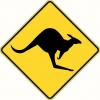Thanks Winston. Interesting ideas there. They do make sense.
I need to experiment, but I have a good idea why it does not work for BU bench planes ...
The history of my using bevel up planes lies with a need for high cutting angles for interlocked West Australian timbers. It was BU Veritas or high angle HNT Gordon woodies. All needed a cutting angle of at least 60 degrees. For BU planes on a 12 degrees bed, as all know, this is a bevel around 50 degrees.
So here's the thing: if you have a 50 degree bevel, why introduce a Unicorn profile? Firstly, it is not necessary for edge endurance. Secondly, increasing the angle at the leading edge makes the plane behave horribly - like a scraper.
So I imagine that those who do unicorn a BU bench plane are using a lower bevel angle to begin. Winston, you are stating that you use a 25 degree bevel. How do you know what you are adding by way of cutting angle with the unicorn profile? Another 20 degrees? 30 degrees? That takes the cutting angle to around 45-50 degrees. It is too low for WA timbers.
The problem here is that BU bench planes require a somewhat OCD approach when you work with interlocked grain. Lesser woods do not test this issue. Just as a case in point, I love the streamers that David and Rob Cosman can produce. On the wood - Hard Maple - it just requires a sharp edge. I can replicate this with ease in my workshop. It is fun

However, try the same set up on a wood like Jarrah, and it will be patchy, the shavings will struggle to straighten, and you will think that the plane blade is dull. Back to the Maple, and the streamers fly.
I use bevel down planes far more these days, and plan to do a little practice this weekend. It is needed in this area and there are a few ideas to try out - I will report back later.






 Reply With Quote
Reply With Quote


 However, try the same set up on a wood like Jarrah, and it will be patchy, the shavings will struggle to straighten, and you will think that the plane blade is dull. Back to the Maple, and the streamers fly.
However, try the same set up on a wood like Jarrah, and it will be patchy, the shavings will struggle to straighten, and you will think that the plane blade is dull. Back to the Maple, and the streamers fly. 
